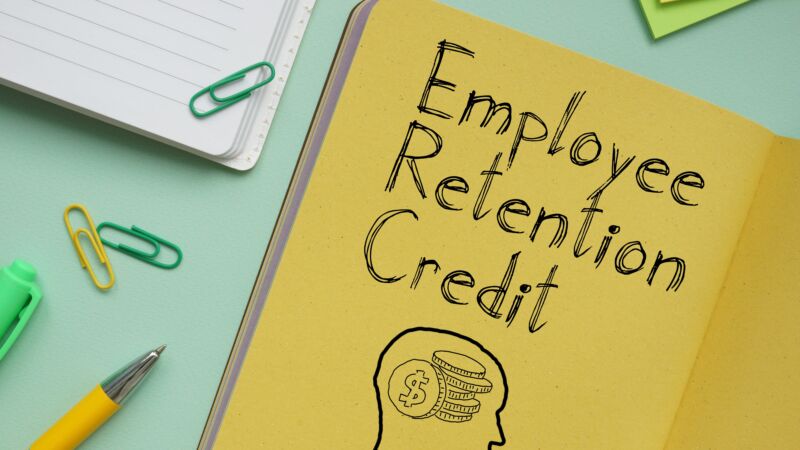The Employee Retention Credit (ERC) emerged as a lifeline for many companies during the COVID-19 pandemic, incentivizing them to retain their employees and navigate through the financial turmoil. However, while the ERC served as a valuable support mechanism, it has also raised concerns about abuse when it comes to accurate claims for the credit.
James Creech, a senior manager with Baker Tilly’s tax advocacy and controversy team, explained that the origin of the current issues with the ERC can be traced back to before the health emergency and the absence of tax preparer oversight. “Tax preparation is kind of the Wild West,” Creech began. “Congress has not enacted a law saying that you have to have certain requirements to prepare claims for refund [and] there’s no prohibition against contingency fees.”
He noted that in a “normal time,” the lack of regulations regarding tax return preparation “wasn’t seen as something that could be a huge issue.” “But then we got COVID-19 [and] the IRS was asked to serve as a benefits administrator as well as a tax authority,” Creech said referring to several credit provisions enacted during the pandemic, including the ERC.
ERC background and issues
The ERC provided eligible employers with a refundable credit allowed against certain employment taxes during most of 2020 and 2021, which was accounted for using Form 941, Employer’s Quarterly Federal Tax Return. After the credit expired, businesses could still claim the credit by filing Form 941-X, Adjusted Employer’s Quarterly Federal Tax Return, or Claim for Refund, which contributed, in part, to a significant and ongoing IRS backlog of these paper-only, filed forms.
Beginning in 2022, the IRS began warning taxpayers to be on the lookout for third parties advising them to claim the ERC, when they may not actually qualify for the credit. These warnings continued with more frequency and even made the top of the IRS’s 2023 “ Dirty Dozen ” list of tax scams. Finally, the IRS ordered an immediate stop to new ERC processing in September 2023, noting that ERC promoters can collect a contingency fee of up to 25% of the refund.
“And so, what I think started out as a very well-meaning credit that was designed to keep a lot of people on the payroll during really difficult times got turned into something where promoters realized there was this opportunity to charge a contingency fee,” Creech said. He added that when ERC promoters realized they could charge a fee with minimal oversight and documentation, “the incentive structure flipped and the ERC became about how many credits can you prepare.”
Moratorium, more questionable claims, and guidance
This surge of questionable claims is what the IRS said prompted it to impose a moratorium on ERC claim processing until 2024. As of September 30, 2023, the IRS Criminal Investigation (CI) initiated 301 investigations involving over $3.4 billion of potentially fraudulent ERC claims for tax years 2020 through 2023. The IRS also announced an initial round of more than 20,000 letters to taxpayers notifying them of disallowed ERC claims on December 6, 2023.
Creech explained that this surge had to do with a change in rationale from trying to find a way to continue to pay employees when a business was forced to shut down for a period of time; to trying to rely on Occupational Safety and Health Administration (OSHA) guidance to meet the ERC definition of an eligible employee, for example.
“And as we get further and further removed from the pandemic, the rationale for the claims gets further and further removed from the accepted ‘slam dunk’ cases,” Creech said.
Recently, the IRS addressed the ERC-OSHA claim angle, stating that taxpayers may not rely on guidance from the agency to meet the definition of an eligible employer for the purposes of filing a claim for the credit.
Congressional action and requiring more documentation
Creech hopes that after the IRS moratorium on ERC claims ends next year, “Congress takes remedial action to say the program as we intended it to be in March 2020 is no longer what the program is and what do we need to do to stop these expenditures that shouldn’t be happening at the scale they have been happening.”
He noted that to avoid a repeat in the high volume of questionable claims after the moratorium is lifted, the IRS should require more documentation for ERC claims. “On the 941xs that are filed, you claim the ERC and it’s just a couple of lines,” Creech said. He added that requiring further information to support ERC claims would generally be a welcome step for tax administration.
Getting a second opinion and withdrawing a claim
Creech also advised that businesses and other tax professionals seek a “second opinion on an ERC claim before it is filed.” “You know, I think I’d want a second opinion, to tell you the truth,” Creech admitted. He added that many who have claimed the ERC did not seek out additional guidance but noted that “it’s not too late for a second opinion, especially with the withdrawal processes that are available now.”
The IRS permits taxpayers the opportunity to withdraw their ERC claim if certain criteria are met. Penalties and interest are not imposed if the ERC claim is withdrawn before it is processed.
“The ERC has just been such an evolving credit that I don’t think there’s any shame in saying, ‘Look, we thought we were eligible, we might have gotten a little ahead of ourselves by using somebody who reached out and promised easy money and a contingency fee that I didn’t have to pay until I got the money, but let’s take a second look at it now,'” Creech explained.
Using an outside subject matter expert
He also advised that businesses deciding to review their ERC claim should start with an outside subject matter expert. “There always has to be that level of professional skepticism that goes into the second layer reviews so people understand the risk,” Creech began. “Because I don’t think many business owners understand that there is risk here.”
For example, if an employer is audited and the amount of the ERC is reduced, an accuracy-related penalty may apply, which is 20% of the underpayment of the tax understated on the return.
“I think the messaging the IRS used has been very well targeted at practitioners, but I think they could probably revamp some of the message and get it out to end business owners or taxpayers in terms of the jeopardy they are in [and explain] that this withdrawal process is a golden opportunity to sleep easy at night,” Creech suggested.
He continued to explain how fast an IRS audit can happen and that if penalties are assessed on an ERC claim where the business already paid a contingency fee, “it can really turn into a net loser very quickly.”
Statute of limitations and more guidance
Due to the statute of limitations, the ERC credit may be claimed until April 15, 2024, for 2020 claims and April 15, 2025, for 2021 claims on Form 941-X. However, during this time-out from new ERC claim processing, IRS guidance has removed some of the avenues that were used to justify the credit. Other than OSHA, IRS guidance also states that an employer merely following Centers for Disease Control (CDC) or Department of Homeland Security (DHS) guidelines has not partially suspended operations due to the governmental orders.
“I think that there’s going to be a lot of credits that get the door closed on them because of that guidance,” Creech said. He also questioned what may happen “to all these people who thought they were getting something safe?”
Questionable claims may continue
He concluded by saying that although the IRS moratorium has been successful in curtailing some of the questionable ERC claims, it will remain difficult for the IRS to continue to dissuade such claims throughout the rest of the time the ERC may be claimed. “It’s hard to compete when there’s advertisements on every baseball, football, basketball game you watch.”
To learn more about how Checkpoint’s payroll solution can help your business, visit https://store.tax.thomsonreuters.com/accounting/Practice-Area/Payroll/c/2400.










